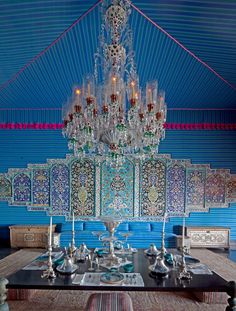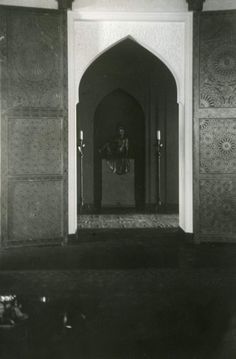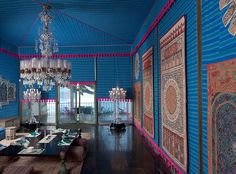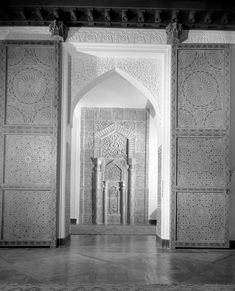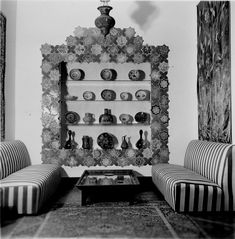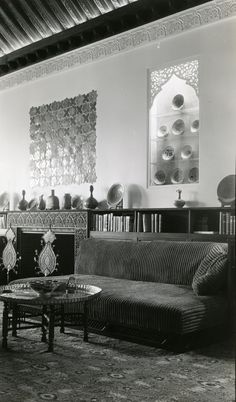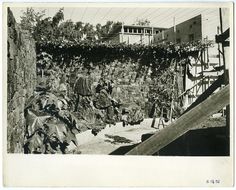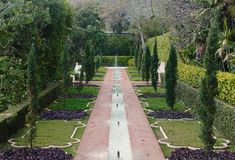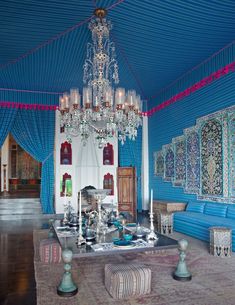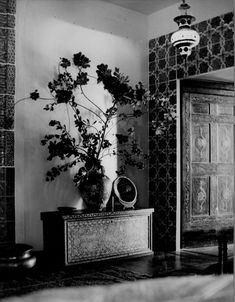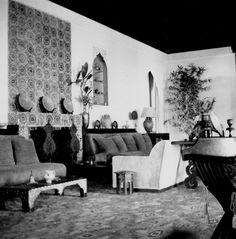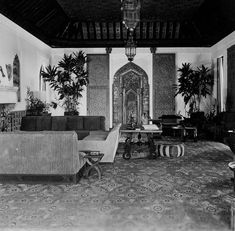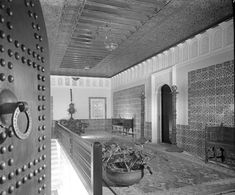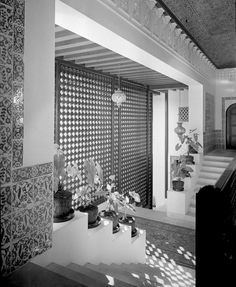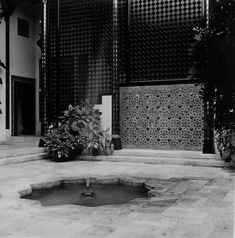Doris Duke
Doris Duke (November 22, 1912 – October 28, 1993) was an American heiress, socialite, horticulturalist, art collector, and philanthropist.
The daughter of a wealthy tobacco tycoon, Duke was able to fund a life of global travel and wide-ranging interests. These extended across journalism, competition surfing, jazz piano, wildlife conservation, Oriental art and Hare Krishna.
Though born in a five-story mansion on Fifth Avenue, Duke grew up to be America's original haute bohemian. While her contemporaries Babe Paley and C.Z. Guest lunched at Le Pavillon, Duke was lounging like an odalisque on a lanai at Shangri La.
Much of her work centered on her father's estate at Hillsborough Township, New Jersey, where she created many elaborately-themed gardens, furnished with artifacts acquired on her world travels, including one of America's largest indoor botanical displays. She was also active in preserving more than 80 historic buildings in Newport, Rhode Island.
Twice divorced, Duke enjoyed a colorful private life that was seldom out of the gossip columns.
Her philanthropic work in AIDS research, medicine, and child welfare continued into her old age, some of it unknown to the public during her lifetime, and her estimated $1.3 billion fortune was largely left to charity. After much legal challenging of the executors and trustees, Duke's legacy is now administered by the Doris Duke Charitable Foundation, dedicated to medical research, prevention of cruelty to children and animals, the performing arts, wildlife and ecology.
She was presented to society as a debutante in 1930, aged 18, at a ball at Rough Point, the family residence in Newport, Rhode Island. She received large bequests from her father's will when she turned 21, 25, and 30; she was sometimes referred to as the "world's richest girl." Her mother died in 1962, leaving her jewelry and a coat. When Doris' father died, he left a fortune valued at $100 million, with the largest share going to Duke and her mother. Nanaline was a shrewd businesswoman, often compared to Hetty Green, and when she died in 1962, she left her daughter, then estimated to be worth $250 million, a fortune triple what J. B. had left her. Duke grew up lonely, pining for the love of her cold, materialistic mother. "I would look at the way she caressed her furs and diamonds," she once said about her mother, Nanaline Duke, "and wish she felt the same way about me."
When Duke came of age, she used her wealth to pursue a variety of interests, including extensive world travel and the arts. During World War II, she worked in a canteen for sailors in Egypt, taking a salary of one dollar a year. She spoke French fluently. In 1945, Duke began a short-lived career as a foreign correspondent for the International News Service, reporting from different cities across the war-ravaged Europe. After the war, she moved to Paris and wrote for the magazine Harper's Bazaar.
While living in Hawaii, Duke became the first non-Hawaiian woman to take up competitive surfing under the tutelage of surfing champion and Olympic swimmer Duke Kahanamoku and his brothers. A lover of animals, in particular her dogs and pet camels, in her later years Duke became a wildlife refuge supporter, an environmental conservationist, and a patron of historic preservation.
Duke's interest in horticulture led to a friendship with Pulitzer Prize-winning author and scientific farmer Louis Bromfield, who operated Malabar Farm, his country home in Lucas, Ohio in Richland County. Today, his farm is part of Malabar Farm State Park, made possible by a donation from Duke that helped purchase the property after Bromfield's death. A section of woods there is dedicated to her and bears her name.
At age 46, Duke started to create Duke Gardens, an exotic public-display garden, to honor her father James Buchanan Duke. She extended new greenhouses from the Horace Trumbauer conservatory at her home in Duke Farms, New Jersey. Each of the eleven interconnected gardens was a full-scale re-creation of a garden theme, country or period, inspired by DuPont's Longwood Gardens. She designed the architectural, artistic and botanical elements of the displays based on observations from her extensive international travels. She also labored on their installation, sometimes working 16-hour days. Display construction began in 1958.
Duke had learned to play the piano at an early age and developed a lifelong appreciation of jazz and befriended jazz musicians. She also liked gospel music and sang in a gospel choir.
In 1966, Duke was behind the wheel of a rented car when it lurched forward and crushed interior designer Eduardo Tirella as he was opening the gates of the mansion they were restoring in Newport, Rhode Island. While it was ruled a freak accident by the police, Tirella's family sued and won $75,000 when Duke was found negligent.
In 1985, Duke befriended an ex—Hare Krishna named Chandi Heffner, whom she ended up adopting, convinced that she was the reincarnation of her baby daughter, Arden. The relationship soured and Duke disowned her, but after Duke's death Heffner settled with the estate for $65 million. Then there was the notorious case of Bernard Lafferty, the inebriated, ponytailed butler who kept vigil at her bedside and to whom she left millions.
Duke acquired a number of homes. Her principal residence and official domicile was Duke Farms, her father's 2,700 acre (11 km²) estate in Hillsborough Township, New Jersey. Here she created Duke Gardens, 60,000-square-foot (5,600 m2) public indoor botanical display that were among the largest in America.
Duke's other residences were private during her lifetime: she spent summer weekends working on her Newport Restoration Foundation projects while staying at Rough Point, the 49-room English manor-style mansion that she inherited in Newport, Rhode Island.
Winters were spent at an estate she built in the 1930s and named "Shangri La" in Honolulu, Hawaii; and at "Falcon's Lair" in Beverly Hills, California, once the home of Rudolph Valentino. She also maintained two apartments in Manhattan: a 9-room penthouse with a 1,000-square-foot (93 m2) veranda at 475 Park Avenue that is currently owned by journalist Cindy Adams; and another apartment near Times Square that she used exclusively as an office for the management of her financial affairs.
She purchased her own Boeing 737 jet and redecorated the interior to travel between homes and on her trips to collect art and plants. The plane included a bedroom decorated to resemble a bedroom in a real house. Doris Duke had difficulty remaining in one place, and whenever she arrived somewhere, she had the desire to go somewhere else.
Duke was a hands-on homeowner, climbing a ladder to a three-story scaffolding to clean tile murals in the courtyard of Shangri La, and working side by side with her gardeners at Duke Farms.
Duke also owned numerous shares in big-name companies, such as General Motors, and had a large financial team of bankers and accountants to manage her holdings (since, despite rumors, Duke had little to no interest in money matters). In addition, Duke had a collection of artwork, which was said to include works by Picasso, Van Gogh, Rembrandt and Monet, as well as her valuable collection of Islamic and Southeast Asia art and furniture. Also in Duke's collection were over 2,000 bottles of rare wine (worth over $5 million) and the extraordinary Duke collection of fine jewels. Her total net worth, including all property, was valued at $5.3 billion.
Three of Duke's residences are currently managed by subsidiaries of the Doris Duke Charitable Foundation and allow limited public access. Duke Farms in New Jersey is managed by the Duke Farms Foundation; a video tour of former Duke Gardens is available. Rough Point was deeded to the Newport Restoration Foundation in 1999 and opened to the public in 2000. Tours are limited to 12 people. Shangri-La is operated by the Doris Duke Foundation for Islamic Art; small personal tours and an online virtual tour are available.
46 Pins
·7y
We think you’ll love these
Related Interests
Visit
The central courtyard, with the late thirteenth-century Ilkhanid tiles partially installed and framed by a pair of mirrored wood columns, early 1940s. Doris Duke Photograph Collection, Doris Duke Charitable Foundation Historical Archives, David M. Rubenstein Rare Book & Manuscript Library, Duke University.

